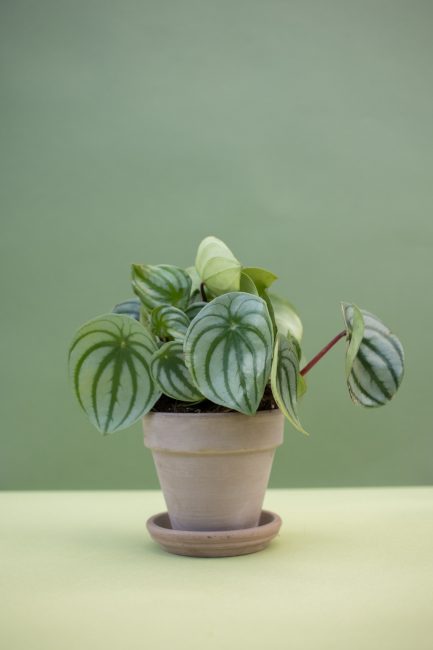Authored by: Carol Shirk
In 1920, James H. Burdett launched the National Gardening Bureau when he saw a need to provide basic gardening instruction to suburbanites. Fr om this inauspicious beginning, the organization has grown for over 100 years. Each year the Bureau selects one annual, one perennial, one bulb crop, one edible, and one shrub as a “Year of the” crops. Plants are chosen because they are popular, easy-to-grow, widely adaptable, genetically diverse, and versatile.
 The 2022 Houseplant of the Year is peperomia. Peperomia is in the family Piperaceae or the pepper family. However, this plant is not similar to the peppers eaten as a vegetable, but rather Piper nigrum, the source of black pepper. It is worth noting that, unlike their cousins, these plants are not suitable for human or pet consumption. Members of the peperomia family are highly decorative houseplants native to tropical South America. While the botanical name comes from the Greek pipéri for pepper, the common name “Radiator Plant” was coined by horticulturalist Liberty Hyde Bailey because the plants appreciate the warm air and bright light that one might find on a windowsill above a radiator.
The 2022 Houseplant of the Year is peperomia. Peperomia is in the family Piperaceae or the pepper family. However, this plant is not similar to the peppers eaten as a vegetable, but rather Piper nigrum, the source of black pepper. It is worth noting that, unlike their cousins, these plants are not suitable for human or pet consumption. Members of the peperomia family are highly decorative houseplants native to tropical South America. While the botanical name comes from the Greek pipéri for pepper, the common name “Radiator Plant” was coined by horticulturalist Liberty Hyde Bailey because the plants appreciate the warm air and bright light that one might find on a windowsill above a radiator.
More than 1000 species of peperomia can be found in their naïve environment, however only a handful have been available to purchase from retailers until recent years. With their ease of growth, exceptional foliage, and smaller size their popularity has soared in recent years, making them more and more available.
Since peperomia are a succulent type plant, clay pots are ideal as they prefer a drier environment. Soil should be a mixture that drains well, and should be allowed to dry out somewhat between watering. Do not overfertilize and cause excessive growth. Low dose feedings twice annually will suffice. The plants will thrive in bright light, but they will tolerate lower light. Varieties with variegated leaves will lose some of the coloring in poor light. Since these are native to the tropics, they prefer warmer temperatures. Protect them from cold window drafts in the winter. They also will benefit from higher humidity, so placing them on a pebble tray will encourage lush growth.
Peperomia are grown primarily for their attractive and unique foliage. One of the easiest and most attractive is Peperomia obtusifolia, commonly called Blunt Leaved Radiator Plant or Baby Rubber Tree. Spoon-shaped glossy green or creamy white and soft green variegated 1–2 inch leaves adorn this 10 inch plant. Minimal care will keep this plant healthy and happy.
The most commonly grown Radiator Plant is Peperomia caperata. Heart shaped and deeply wrinkled leaves, sometimes with a reddish blush make this plant stunning. Numerous new cultivars have hit the market, making it hard to choose just one of this compact plant.
Peperomia clusiifolia, the Red-edge Peperomia, sports thick paddle shaped green and white leaves frequently splashed with red along the edges.
Although all of the previously mentioned peperomia varieties are upright plants, there are several trailing plants that grow well in hanging baskets. Peperomia prostrata, String of Turtles, has round leaves resembling turtle shells and Peperomia routndifolia, Trailing Jade, described as “long and fancy” will both work well where vining plants are needed.
Purchase a new peperomia plant at a reliable nursery. Who knows—you might just come home with more than one.
Carol Shirk
Certified Master Gardener




